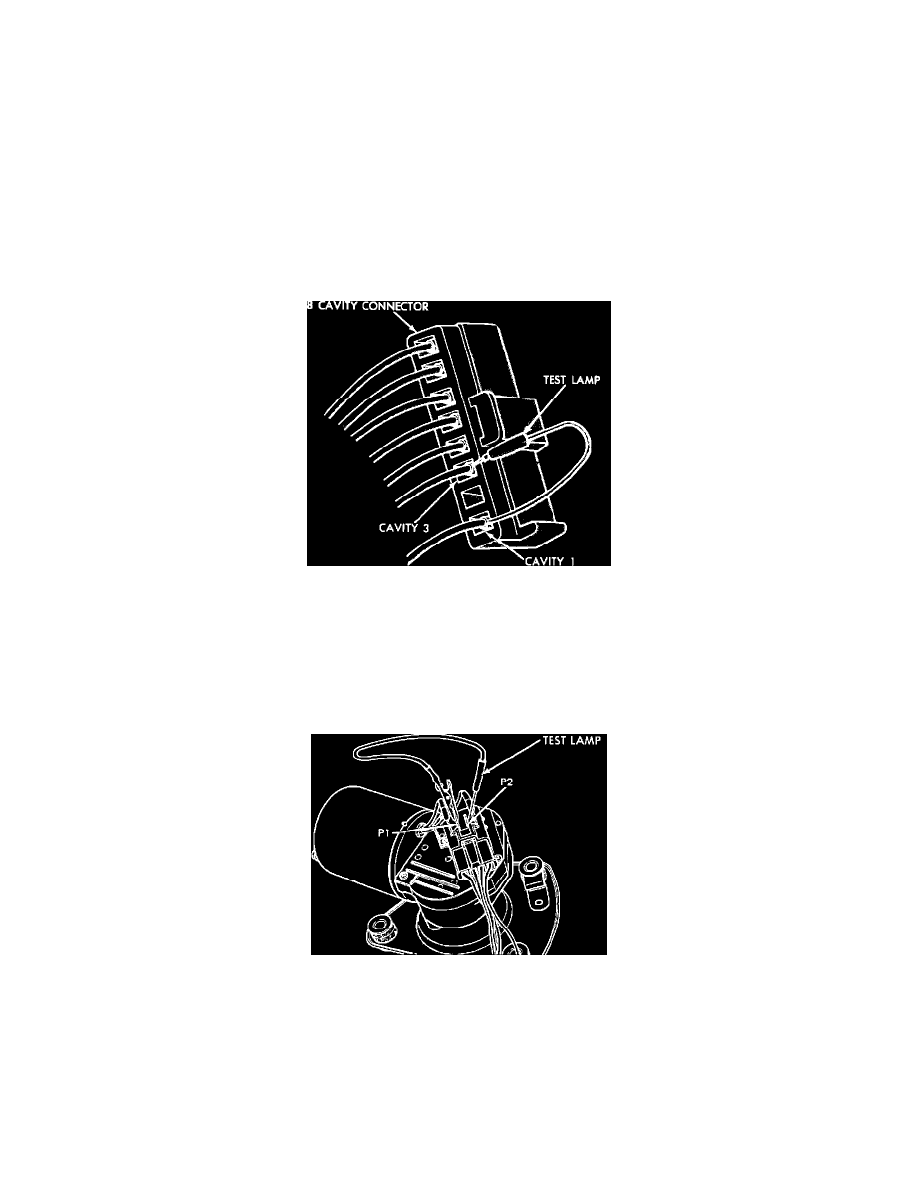Lebaron Convertible L4-135 2.2L SOHC Turbo VIN E FI (1985)

3.
Depress wash switch.
4.
If voltage reads 0V, check switch and wiring.
5.
If reading is 10 - 15V, control unit is faulty and should be replaced.
No Extra Wipe When Wash Control Is Released
Intermittent wipe and standard two-speed motors are identical. Refer to TWO SPEED WIPER SYSTEM in this section for diagnosis of system
problems not involving the delay function.
If wipers run continually in delay mode when wash is operated but do not provide an extra wipe when the wash control is released, the control unit is
faulty and should be replaced.
Wipers Continue Running Without Delay
Intermittent wipe and standard two-speed motors are identical. Refer to TWO SPEED WIPER SYSTEM in this section for diagnosis of system
problems not involving the delay function.
Test Lamp Between Cavities 1 And 3
1.
Verify that motor will park when switch is "OFF." If not, refer to TWO SPEED WIPER SYSTEM in this section and make necessary repairs
before proceeding.
2.
Place switch in "Low" position.
3.
Disconnect 8 cavity connector from intermittent wipe control unit and inspect contacts for damage.
4.
Connect test lamp between cavities "1" and "3." Once every cycle the lamp should light.
5.
If there is periodic flashing, the control unit is faulty and should be replaced.
Test Lamp Between Terminals "P1" And "P2"
6.
If not, check for periodic flashing between motor terminals "P1" and "P2." If periodic flashing occurs at the motor, check wiring.
Wipers Start Erratically During Delay Mode
Intermittent wipe and standard two-speed motors are identical. Refer to TWO SPEED WIPER SYSTEM in this section for diagnosis of system
problems not involving the delay function.
1.
Verify that ground connection at instrument panel is tight and making good contact.
2.
Verify that motor ground strap is making good contact and that motor mounting bolts are tight.
